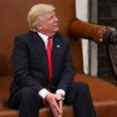-
Posts
15,177 -
Joined
-
Last visited
-
Days Won
48
Content Type
Events
Forums
Downloads
Quizzes
Gallery
Blogs
Everything posted by Will B Good
-
-
There is no currently peer-reviewed scientific evidence proving that COVID-19 boosters cause cancer to grow, recur, or progress. However, there have been some case reports and hypotheses raised — most notably by individuals like Professor Angus Dalgleish — suggesting that in some patients with previously stable cancers, there were observed relapses following booster vaccination. These are anecdotal observations and not conclusive proof of causality.
-
I guess you are still hoping you might change then?
-

Songkran Success: Tourist Surge Boosts Thai Economy
Will B Good replied to webfact's topic in Thailand News
Whatever happened to the wondrous, brilliant, genius suggestion of making it a month long event.....idiots. -

Behind the fatal Trump flaw MAGA can't even defend
Will B Good replied to simple1's topic in Political Soapbox
Again, I would agree in principle, but going off the last election common sense (or any sense) doesn't seem to hold any great sway with a US electorate....at least the one's that are prepared to get off their backside's and vote. -

Crime CIB Cracks Down on Illegal Jet Ski Operations on Phuket Beaches
Will B Good replied to Georgealbert's topic in Phuket News
They should be totally banned from where people swim/snorkel and they should comply with noise levels that make them less irritating. We moved from our last hotel, away from the beach, as the constant noise from one particular model was ridiculous. -

Behind the fatal Trump flaw MAGA can't even defend
Will B Good replied to simple1's topic in Political Soapbox
I would agree in many respects......if they stand a chance they must field a white, middle aged, heterosexual, married man with three of four kids and no previous.......the only type of candidate that stands a chance......or even better Obama. -
No. But to be honest I can't say I was even looking.
-
He entered the United States illegally in 2011 at the age of 16. In 2019, an immigration judge granted him “withholding of removal” status—a form of legal protection that allowed him to live and work in the U.S. due to the danger he faced from gang violence if he returned to El Salvador. This status meant that, while he did not have full legal residency, he was lawfully present in the country and not subject to deportation.
-

Trump has finally met his match as he fights 3 unwinnable wars
Will B Good replied to simple1's topic in Political Soapbox
Well spotted.....and classic example of how the right try to manipulate everything. -

Trump has finally met his match as he fights 3 unwinnable wars
Will B Good replied to simple1's topic in Political Soapbox
Can't beat Bearnaise on a fillet steak (one free of hormones and antibiotics of course) -

Trump has finally met his match as he fights 3 unwinnable wars
Will B Good replied to simple1's topic in Political Soapbox
They can easily outlast the US....they rule with an iron fist and can leave their people to live in abject poverty.......as much as Trump would love to able to have that power, he is nowhere near it. -

The left wants to destroy the Greatest country on Earth.
Will B Good replied to riclag's topic in Political Soapbox
How sick. The mother of a rape victim exploited for political purposes by a rapist. -

Trump has finally met his match as he fights 3 unwinnable wars
Will B Good replied to simple1's topic in Political Soapbox
Only a 7% mismatch in trade, China has a booming economy and is the largest holder of US debt in the world. The Chinese would be shooting themselves in the foot, but if they off loaded that debt the US would be wiped out. -

PM Paetongtarn Named Young Global Leader 2025 by World Economic Forum
Will B Good replied to webfact's topic in Thailand News
OMG.....what must the other 113 be like????? -
Just taking one line.....no pre-license testing........ Preclinical Testing: Before human trials, vaccines are tested in laboratories and on animals to assess their safety and potential to elicit an immune response. Clinical Trials: Vaccines that pass preclinical testing proceed to human clinical trials, which occur in three phases: Phase 1: Involves a small group of volunteers to evaluate safety and determine appropriate dosage. Phase 2: Expands the study to more participants to further assess safety and begin evaluating effectiveness. Phase 3: Involves thousands of participants to confirm effectiveness, monitor side effects, and compare the vaccine to commonly used treatments. These trials are conducted under strict FDA guidelines to ensure the integrity of the data and the safety of the participants . FDA Review and Approval: After successful clinical trials, manufacturers submit a Biologics License Application (BLA) to the FDA, providing comprehensive data on safety, efficacy, manufacturing processes, and labeling. The FDA thoroughly reviews this information before granting approval . Post-Licensing Monitoring Even after a vaccine is approved, monitoring continues through systems like: Vaccine Adverse Event Reporting System (VAERS): Collects and analyzes reports of adverse events that occur after vaccination. Vaccine Safety Datalink (VSD): A collaboration between the CDC and healthcare organizations to monitor vaccine safety and conduct studies about rare and serious adverse events. Clinical Immunization Safety Assessment (CISA) Project: Conducts clinical research on vaccine-associated health risks . These systems ensure ongoing evaluation of vaccine safety and effectiveness in the general population. The U.S. has a comprehensive and stringent process for vaccine safety testing before and after licensing. Claims suggesting the absence of pre-licensing safety testing are unfounded and contradict the established procedures upheld by the FDA and CDC.










